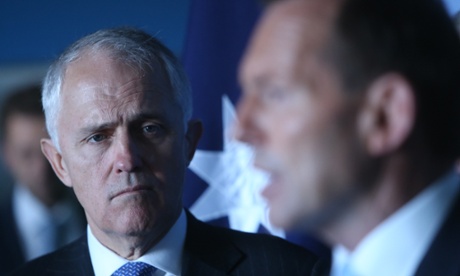There are many obstacles that could prevent Malcolm Turnbull recalibrating climate policy, but also huge opportunities. [16 September 2015 | Peter Boyer]
At long last there’s hope that Australia under a Liberal government might actually contribute something to the global battle against global warming.
That’s not immediately obvious. On the face of it, Malcolm Turnbull’s elevation to party leadership on Monday night gives no great cause for optimism.
There’s the fact that Australia’s broadband network, administered until Monday by Turnbull, remains in a legal, technical and financial mess that seriously compromises its effectiveness. Now a new communications minister will have to pick up the pieces. Not a good omen for the top job.
There’s also Turnbull’s stated support for a climate policy that no-one outside government seems to think will do anything to reduce emissions. Replacing Labor’s carbon pricing scheme, “Direct Action” involves a significant cost to revenue. Its “safeguard mechanism” against excessive carbon pollution imposes no effective penalty and according to environment minister Greg Hunt the government expects no revenue from it.
At his first media conference on Monday night, Turnbull said he continued to support that policy, which he declared to be “very well designed, a very, very good piece of work”.
Remarkable. This is the same person who in December 2009, days after Tony Abbott had ousted him from Liberal leadership over climate policy, wrote bitterly that Abbott’s Direct Action was “a con, an environmental fig-leaf to cover a determination to do nothing”.
“You cannot cut emissions without a cost…someone has to pay,” Turnbull said then. “So any suggestion that you can dramatically cut emissions without any cost is, to use a favourite term of Mr Abbott, ‘bullshit’.
“Many Liberals are rightly dismayed that on this vital issue of climate change we are not simply without a policy, without any prospect of having a credible policy but we are now without integrity. We have given our opponents the irrefutable, undeniable evidence that we cannot be trusted.”
Two months later Turnbull told parliament that the policy was “a recipe for fiscal recklessness on a grand scale”, and in 2011 said that if it were implemented over a long period it would be “a very expensive charge on the budget in the years ahead”.
When the Coalition came to power in 2013, Turnbull became a member of Tony Abbott’s cabinet, with Hunt given charge of killing the carbon pricing scheme and implementing his party’s climate policies. On that subject, Turnbull went quiet. Now, with his ascendency, a policy he once loathed has become “a very, very good piece of work”. That’s politics.
Nearly six years have passed since Abbott took over from Turnbull. In those six years – notwithstanding carbon pricing – the public debate about climate change has lost out, lacking any direction or leadership.
For that waste of good time, Tony Abbott must take primary responsibility. This was not deliberate neglect nor an act of sabotage; rather it was the inevitable outcome of electing a leader who never understood, nor sought to understand, why climate change matters.
It’s now Turnbull’s task to declare afresh the party’s commitment to climate action and to ensure that a re-worked Direct Action policy really does what it’s supposed to do: get emissions down. Turning things around won’t be easy for a government used to the lazy, unscientific position that emissions don’t matter and that “climate is always changing – we just need to adapt”.
Many Coalition MPs, including all the Nationals, remain sceptical about the need to do anything. Driven by what is becoming something of a religion, they’ll move heaven and earth to keep it that way, even to the extent of open party revolt against their leader.
But Turnbull does have some things on his side. The optimistic tone of his manifesto on the day he was elected was a sign that he would be favouring innovation, and there’s no more fertile field for that than effective measures to cut emissions.
Thanks to Clive Palmer some key instruments of climate policy – the Climate Change Authority, the Clean Energy Finance Corporation and the Australian Renewable Energy Agency – were saved from the Abbott axe. They are now available to help Turnbull resurrect a credible policy.
Renewable energy in particular is ripe for development. Turnbull can build on the success of CEFC and ARENA (achieved despite government opposition) to foster a resurgent renewable energy industry in a country with world-leading solar and wind energy resources.
Turnbull is sticking with our 2030 emissions targets, despite the near-universal consensus outside government circles that they should be tougher. He maintains his environment minister’s line that the Emissions Reduction Fund is working “spectacularly”, flying in the face of economic analysis that says it’s a spectacular failure. These are not positions he can maintain if he wishes to have credibility among those who want real, physical results in our drive to cut emissions.
But at least he understands the problem. Given that, it’s sensible to allow him a little breathing space.

